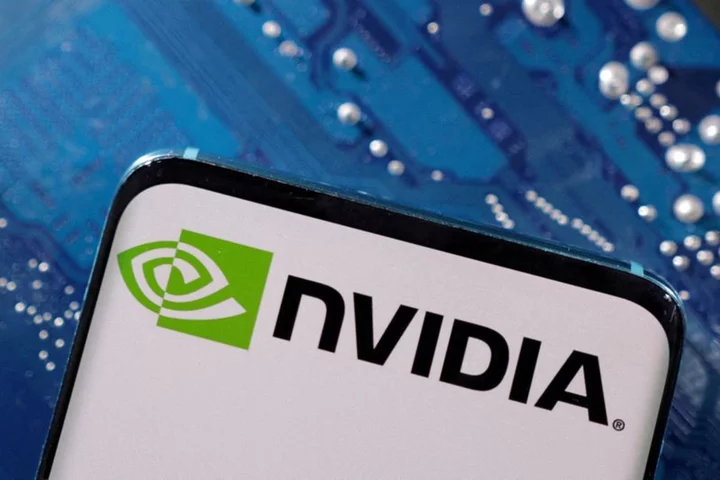California regulators gave approval Thursday to two rival robotaxi companies, Cruise and Waymo, to operate their driverless cars 24/7 across all of San Francisco and charge passengers for their services.
The much-anticipated vote, which followed roughly six hours of public comment both for and against driverless taxis, came amid clashes between the robotaxi companies and some residents of the hilly city. San Francisco first responders, city transportation leaders and local activists are among those who shared concerns about the technology.
The California Public Utilities Commission regulates self-driving cars in the state and voted 3-to-1 in favor of Waymo and Cruise expanding their operations.
That means residents and visitors to San Francisco will be able to pay a fare to ride in a driverless taxi, ushering in new automated competition to cab and ridehail drivers.
"Today's permit marks the true beginning of our commercial operations in San Francisco," said Tekedra Mawakana, co-CEO of Waymo, in a press release.
Cruise spokesperson Drew Pusateri said in a statement to CNN that the 24/7 driverless service is a "historic industry milestone" that puts Cruise "in a position to compete with traditional ridehail, and challenge an unsafe, inaccessible transportation status quo."
The votes are in. What changes?
Until Thursday's vote, Cruise and Waymo could offer only limited service to San Francisco residents.
Cruise -- a subsidiary of General Motors -- could charge a fare only for overnight rides occurring between 10 p.m. and 6 a.m. in select parts of the city. Waymo, owned by Google's parent company Alphabet, could charge a fare only for rides with a human driver in the vehicle.
Now, Cruise and Waymo can charge a fare for their driverless rides and 24/7 access to San Francisco streets as they do so.
Cruise officials told state commissioners at a recent public hearing that it deploys about 300 vehicles at night and 100 during the day, while Waymo officials said that around 100 of its 250 vehicles are on the road at any given time.
First responders sound the alarm
The autonomous ride-hailing service offered by Cruise and Waymo allows users to request a ride similar to Uber or Lyft. There is a difference, of course: The car has no driver.
Members of the public packed the commission's San Francisco headquarters to share their thoughts with state commissioners in one-minute increments during the meeting. Critics pointed to driverless cars freezing in traffic and blocking first responders, while advocates said they felt the cars drove more defensively than human drivers.
Although the decision ultimately laid in the hands of state regulators, who delayed the vote twice, local officials also expressed their dissent.
The San Francisco Police Officers Association, San Francisco Deputy Sheriffs' Association and the San Francisco Fire Fighters Local 798 all wrote letters to the CPUC in the week leading up to the originally scheduled vote on June 29. Each expressed concerns that autonomous vehicles could impede emergency responders.
"The time that it takes for an officer or any other public safety employee to try and interact with an autonomous vehicle is frustrating in the best-case scenario, but when they can not comprehend our demands to move to the side of the roadway and are stopped in the middle of the roadway blocking emergency response units, then it rises to another level of danger," wrote Tracy McCray, president of the San Francisco Police Officers Association in June, "and that is unacceptable."
The San Francisco Fire Department has recorded 55 incidents of driverless vehicles interfering with their emergency responses in 2023 as of Wednesday, the department confirmed to CNN.
In one incident reported by the department on Saturday, a Waymo car pulled up between a car on fire and the fire truck aiming to put it out.
Other instances include robotaxis driving through yellow tape into the scene of a shooting, blocking firehouse driveways such that a fire truck farther away had to respond to the scene, and requiring firefighters to reroute, according to Fire Chief Jeanine Nicholson.
"It should not be up to my people to have to move their vehicle out of the way when we're responding to one of our 160,000 calls," Nicholson told CNN in June.
Robotaxi companies have often touted their safety records. Out of 3 million driverless miles, a Cruise car has not been involved in a single fatality or life-threatening injury, according to the company. In a February review of its first million driverless miles, Waymo said their cars caused no reported injuries and that 55% of all contact events were the result of a human driver hitting a stationary Waymo vehicle.
2022 was the worst year on record for traffic fatalities in San Francisco since 2014, according to city data. Cruise said that when benchmarked against human drivers in comparable driving environments, its vehicles were involved in 54% fewer collisions overall.
The San Francisco Municipal Transportation Agency said in a California Public Utilities Commission meeting on Monday that it had logged almost 600 incidents involving autonomous vehicles since the technology first launched in San Francisco. The agency said they believe this is "a fraction" of actual incidents due to what they allege is a lack of data transparency.
Genevieve Shiroma, the dissenting commissioner in the 3-1 vote, recommended the commission delay the vote until they received a "better understanding of the safety impacts" of the vehicles.
"First responders should not be prevented from doing their job. The fact that an injury or fatality has not occurred yet is not the end of the inquiry," Shiroma said. "The commission needs a better explanation regarding why these events occur."









